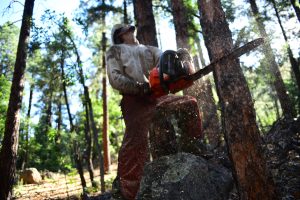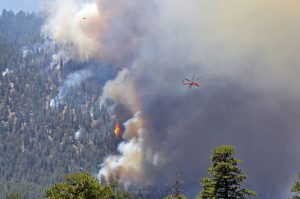During the summer and fall of 2017, the Flagstaff Watershed Protection Project was able to participate in a new collaborative project to help implement our watershed protection work! In partnership with the National Forest Foundation (NFF), American Conservation Experience (ACE), and the Coconino National Forest, we were able to complete an additional 115 acres of hand thinning across the FWPP project area.
Through this collaborative, ACE was able to hire, train, and deploy 8 young and emerging conservationist to implement the work. The ACE crew used chainsaws to cut, limb, and pile small diameter “ladder fuel” trees from the forest to help reduce the risk of high severity wildfire in the lower Dry Lake Hills area along the Rocky Ridge trail.
Please take a few minutes to learn about how ACE contributed to the Flagstaff Watershed Protection Project and hear their unique stories in this mini documentary that they created for our collaborative project.






